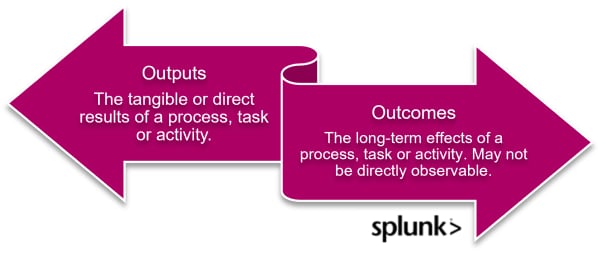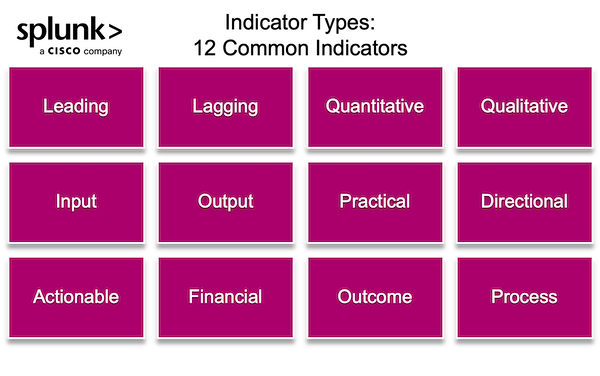Top 12 KPIs To Know & Use: Key Performance Indicators Explained

Indicators can be a powerful tool to measure the success of a business. With the right mix of indicators, you can uncover valuable insights and track progress toward goals.
However, knowing which indicators to use and when to use them for the right purpose is crucial to measuring success accurately! In this article we'll explore 12 types of performance indicators, when they should be used and how to use them to measure success.
Curious to learn more? I'll share more details below.
What are Key Performance Indicators?
Key Performance Indicators (KPIs) are a set of quantifiable measurements used to track the performance of an organization or business toward achieving its defined goals and objectives.
KPIs are chosen based on your organization's objectives and goals. The KPIs help to provide insight into how well the organization is performing in terms of achieving these goals: are you on track for hitting the goal, or not?
These indicators can be used to measure a wide range of business activities. For example, for a sales team, KPIs may be focused on metrics such as the number of leads generated or the percentage of leads that convert into sales. By tracking and monitoring KPIs, organizations can:
- Quickly identify underperforming areas and take corrective action to improve performance.
- Set and track employees' targets and goals, helping motivate and encourage them to achieve their objectives.
KPIs are essential for organizations looking to measure their performance and achieve their strategic objectives.
What is the difference between KPIs and metrics?
KPIs are strategic and measure performance based on specific business objectives and goals. They serve as high-level indicators of success, like:
- Customer retention: are the indicators that you're retaining more or fewer customer?
- Sales growth: are the indicators showing increased sales?
In contrast, metrics are operational and focus on measuring specific processes that support the KPIs. Examples of metrics include:
- Email open rates in a marketing campaign
- The lead-to-conversion ratio
Simply put, KPIs are the key outcomes, while metrics are the data points that support those outcomes.
(Related reading: outputs vs. outcomes and metrics, OKRs, and KPIs: what's the difference?)

What is an example of a "SMART" KPI?
A SMART KPI refers to the SMART goalsetting framework. In this, SMART means any goal you set should be specific, measurable, achievable, relevant, and time-bound.
An example of a SMART KPI could be increasing new customers by 20% over the next quarter through targeted ad campaign. This counts as a SMART KPI because it is:
- Specific since it focuses on increasing customers.
- Measurable since you can quantify and track the 20% increase.
- Achievable since it's a realistic target. (In contrast, doubling sales in a single quarter may not be achievable.)
- Relevant because it aligns with the broader business goals like driving sales.
- Time-bound since you've set a clear 3-month deadline.
Now, with that understanding of indicators, let's look at the 12 most common types.
Common types of indicators
Indicators come in many forms, each measuring different aspects of a business's performance. Here are twelve types of indicators you should know:
Leading indicators
Leading indicators are predictive metrics that measure the effectiveness of any changes and provide insight into how a business can improve. These indicators help to define the necessary actions to reach business goals. These indicators are called "leading" because they are used to predict what's going to happen in the future — not measuring only what's already happened.
Leading indicators are often qualitative, such as customer surveys or employee engagement scores. Some examples include:
- Number of service bookings
- Customer retention rates
- Website traffic
When to use leading indicators: Use leading indicators when you want to track and predict future performance based on current or past performance.
Lagging indicators
Lagging indicators are performance metrics that are used to measure the results or outcomes of past activities. They are called "lagging" because they measure what has already happened, after the fact, rather than predicting what is likely to happen in the future.
Lagging indicators are typically used to measure the effectiveness or success of a business strategy or initiative. While lagging indicators are useful for measuring the success or effectiveness of past activities, they do not provide much insight into future performance or potential issues.
Here are some examples of lagging indicators:
- Customer satisfaction scores
- Sales revenue
- Employee turnover rate
When to use lagging indicators: Lagging indicators should be used when you want to measure and assess the effectiveness of past actions and trends over time. Generally, lagging indicators are used to evaluate and measure the performance of a specific area of a business or operation.

Quantitative indicators
Quantitative indicators are numerical measurements used to track and measure specific outcomes or processes. These indicators are expressed in terms of numeric values or percentages.
You can use quantitative indicators to measure a wide range of activities and processes. Some examples include:
- Number of products sold
- Customer acquisition cost
- Total revenue generated
When to use quantitative indicators: Use quantitative indicators when you need to measure and track specific numerical values or percentages to assess performance, progress or impact over time. These metrics provide an easy way to analyze data and make informed decisions on improving performance.
(Explore top data analytics certifications.)
Qualitative indicators
Qualitative indicators are metrics that measure subjective or intangible aspects of performance.
These indicators are typically expressed as opinions, experiences or other qualitative data points and can provide valuable insight into customer experience, employee engagement and brand perception. Some examples include:
- Customer feedback surveys
- Employee satisfaction surveys
- Brand reputation scores
When to use qualitative indicators: Qualitative indicators should be used when you need to measure intangible aspects of performance, such as customer experience, employee engagement or brand perception. These metrics provide valuable insight into how a business is perceived and can help inform decision making.
Input indicators
Input indicators measure the inputs that go into a business process or activity.
These metrics can measure and track resources such as time, money, and materials needed for a specific action or task. Some examples include:
- Total hours worked on a project
- Cost of materials used in production
- Amount of raw materials used
When to use input indicators: Input indicators should be used when you need to measure and track the resources required for a specific activity or task. These metrics provide an easy way to analyze resource utilization and help inform decision-making about cost savings or efficiency improvements.
Output indicators
Output indicators measure the results of a business process or activity. These metrics can track performance outcomes and provide insight into the success or failure of a specific task or initiative. Some examples include:
- Number of products sold
- Number of customer complaints resolved
- Net profit generated
When to use output indicators: Output indicators should be used when you need to measure and track the results of an activity or process. These metrics may help you understand what work is getting completed, but it may not offer insight into the effectiveness of a business strategy and can help inform decision-making about areas that require improvement. (That's where outcomes would come in.)
Practical indicators
Practical indicators are measurements or data points used to evaluate a specific aspect of a process or system. They are typically quantitative in nature and are used to assess performance or progress towards a particular goal.
These indicators should be carefully selected and aligned with the objectives of the process or system being evaluated in order to provide useful insights and inform decision-making. Some examples include:
- Completion rate
- Response time
- Return on investment (ROI)
When to use practical indicators: Practical indicators should be used in situations where there is a need to measure and evaluate the performance of a process or system. They are especially useful when there is a need to:
- Make data-driven decisions.
- Track progress toward specific goals or objectives.
Directional indicators
Directional indicators in businesses refer to key metrics that show where they stand among their competitors.
These metrics provide a view into how well a business is performing relative to their competitors, allowing management to make informed decisions on areas it can improve. Some examples include:
- Market share
- Customer loyalty
When to use directional indicators: Directional indicators should be used to measure how well a business is performing relative to its competitors.
These metrics provide insight into areas where the business may need to improve in order to stay competitive, allowing management to make more informed decisions.
Actionable indicators
Actionable indicators provide a measurement of how effective a company is in implementing and executing its strategies. These metrics track the progress of an action plan and provide insight into whether it is achieving its desired results.
When to use actionable indicators: Actionable indicators should be used when measuring how well a business is able to execute its strategies.
These metrics provide insight into the effectiveness of a company’s execution plan, allowing management to make adjustments as needed and ensure that it is achieving the desired results.
Financial indicators
Financial indicators are metrics that provide a clearer picture of a company's financial performance.
These metrics track the financial health of a business, providing an accurate view of its income, cash flows, and profitability. Some examples include:
- Revenue growth rate
- Return on equity (ROE)
- Debt-to-equity ratio
When to use financial indicators: Always! Use financial indicators in all businesses — these indicators provide real insight into the health of a company's finances. These indicators can help in budgeting, investments and other fiscal matters.
Outcome indicators
Outcome indicators measure the final result of a process or system. They provide insight into whether a goal or objective has been achieved. Some examples include:
- Conversion rate
- Number of sales leads generated
When to use outcome indicators: Outcome indicators should be used when a business wants to measure the effectiveness of its sales and marketing efforts.
Process indicators
Process indicators measure the efficiency of a process or system. They give insight into whether the process is running smoothly and allow for optimization where necessary. Some examples include:
- Cycle time
- Throughput rate
- Average order size
When to use process indicators: Process indicators should be used when evaluating the efficiency of a process or system. These metrics can provide valuable insights into the efficiency of the process, allowing for optimization and improvement where necessary.
Reporting on KPIs: how to create KPI reports
Of course, the final part of KPIs is usually reporting out on them, whether to your manager or top leadership of your organization. Creating a KPI report involves the following steps:
Create an outline that states the report's objective, the target audience, and the business outcomes that the KPI will measure.
Choose relevant KPIs that align with your business objectives. Make sure they adhere to the SMART framework.
Collect reliable data from relevant sources like analytics software and CRM systems. Define performance targets and baseline values to measure progress.
Use visualization tools to create charts, dashboards, and graphs to present data effectively and ensure it's easy to understand. Also, analyze the data to identify trends, highlight areas of improvement, and offer insights.
Regularly review and refine the report to reflect new data, adjust the KPIs and metrics if the business goals change, and incorporate any feedback you receive to improve continuously.
Final thoughts
Performance indicators are invaluable tools for businesses. They provide valuable insight into the performance of a system or process, helping to guide decision-making and ensure success.
However, it's vital to remember that different types of indicators serve different purposes — each one should be used in the appropriate context and evaluated regularly so that any necessary adjustments can be made.
Businesses should adopt a strategy that uses a combination of these powerful indicators to ensure that all aspects of a business is quantified to drive better decisions.
FAQs about Top KPIs
A KPI, or Key Performance Indicator, is a measurable value that demonstrates how effectively a company is achieving key business objectives.
KPIs are important because they help organizations understand how well they are performing in relation to their strategic goals and objectives.
To choose the right KPIs, organizations should align them with their strategic objectives, ensure they are measurable, and select indicators that are relevant to their business goals.
Examples of KPIs include revenue growth, customer retention rate, profit margin, and employee turnover rate.
KPIs should be reviewed regularly to ensure they remain aligned with business objectives and continue to provide valuable insights.
See an error or have a suggestion? Please let us know by emailing splunkblogs@cisco.com.
This posting does not necessarily represent Splunk's position, strategies or opinion.
Related Articles
About Splunk
The world’s leading organizations rely on Splunk, a Cisco company, to continuously strengthen digital resilience with our unified security and observability platform, powered by industry-leading AI.
Our customers trust Splunk’s award-winning security and observability solutions to secure and improve the reliability of their complex digital environments, at any scale.


